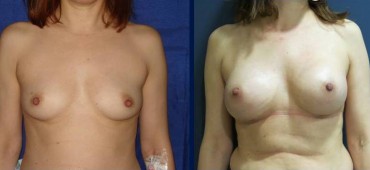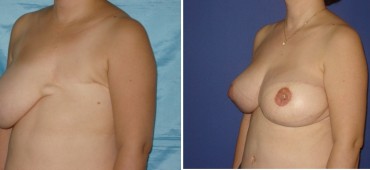Beast reconstruction is an operation to try to get back the shape of the breast. Reconstruction of a breast that has been removed due to cancer or other disease is one of the most rewarding surgical procedures available today.
Breast reconstruction can be done:
1/ after breast cancer surgery i.e. mastectomy (removal of a breast), lumpectomy (removal of part of the breast), or
2/ after any type of trauma, burn deformity or injury that resulted in a deformity of the breasts.
The aim of breast reconstruction is to match the remaining natural breast as closely as possible. This can either be done by creating a breast ‘form’ with an implant, which is put underneath the skin and muscle that covers your chest, or by using skin, fat (and sometimes muscle) from another part of your body. A combination of these techniques is used for some women.
Doctors differ in their views about the best timing for breast reconstruction. Most prefer to do it at the same time as the initial breast cancer surgery. Other doctors believe it is important to wait for a while, possibly a year or more after having a breast removed, if radiotherapy is being considered after mastectomy. Waiting before the reconstruction may also give a woman time to come to terms with the emotional effects of the cancer.
Some women find that reconstruction carried out at the same time as their initial surgery, helps them to cope with the emotions that are normally associated with the loss of a breast, and to get back to a normal life again. Reconstruction has no known effect on the recurrence of disease in the breast, nor does it generally interfere with chemotherapy or radiation treatment, should cancer recur. Your surgeon may recommend continuation of periodic mammograms on both the reconstructed and the remaining normal breast. If your reconstruction involves an implant, be sure to go to a radiology center where technicians are experienced in the special techniques required to get a reliable x-ray of a breast reconstructed with an implant. Scans and x-rays of the breast area are still possible and if the cancer comes back in the breast area, this can still be detected.
It is possible to create a new nipple and this is usually done as a separate operation once the reconstructed breast has settled into its final shape. However, this does not have to be done unless you wish.
There are four main types of breast reconstruction:
- Reconstruction using an implant
- Skin expansion. The most common technique combines skin expansion and subsequent insertion of an implant.
- Tissue flap reconstruction, in which skin, muscle and fat from your back or abdomen (tummy) is tunneled through to the chest to create a new breast. The skin, muscle and fat stays connected to the area of the body from which it was taken.
- Free flap reconstruction, in which skin and fat from your lower abdomen, or occasionally buttock, is grafted to the breast area. The skin and fat is completely removed from the original area and a new blood supply is created for the new breast tissue, using microsurgery.
You are likely to feel tired and sore for a week or two after reconstruction. Most of your discomfort can be controlled by medication prescribed by your doctor. Depending on the extent of your surgery, you’ll probably be released from the hospital in two to five days.
After mastectomy, mammograms are not usually necessary for the reconstructed breast, but you will be invited to have mammograms on the other breast every 1–2 years. If you have had partial breast reconstruction, these do not interfere with x-rays and may make the breast tissue easier to check on x-rays.




